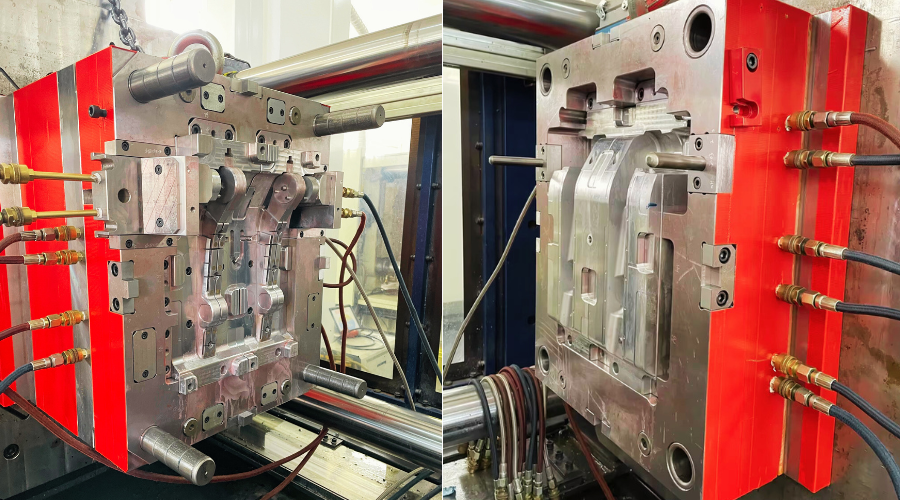Contents
Injection molding is a foundamental aspect of modern manufacturing, enabling the large-scale production of precise and intricate plastic parts. At the heart of this process lies the tooling, particularly the molds and their components, which determince the shape, surface texture, and structural integrity of the final product. This article examinces the differnet types of injection molding molds and the key components that form these essential tools.

Types of Injection Molding Molds
1. Single-Cavity Molds
Single-cavity molds produce one part per cycle, making them ideal for low-volume production or prototyping. They offer several benefits:
- Cost-Effective for Small Runs: Lower initial investment compared to multi-cavity molds.
- Quick Iterations: Easier and faster to modify for design changes.
- Higher Precision: Reduced risk of inconsistencies as each cycle produces only one part.
2. Multi-Cavity Molds
Multi-cavity molds can produce multiple parts per cycle, significantly increasing production efficiency. These molds are suitable for high-volume manufacturing where consistency and speed are paramount.
- Increased Output: Multiple parts per cycle enhance productivity.
- Cost Efficiency: Lower per-part cost in high-volume production.
- Consistent Quality: Uniformity across all cavities ensures consistent part quality.
3. Family Molds
Family molds contain multiple cavities that produce different parts within the same cycle. This is advantageous for assembling multiple components of a product.
- Assembly Efficiency: Produce related parts simultaneously.
- Cost Savings: Reduce the need for multiple molds and machine setups.
4. Two-Shot(Multi-Shot) Molds
Two-shot molds enable the molding of two different materials or colors in single cycle. This process is often used for parts that require multiple materials or colors without the need for secondary operations.
- Enhanced Functionality: Combine hard and soft mateirals for ergonomic designs.
- Aesthetic Flexibility: Achieve multi-colored parts without additional assembly.
5. Hot Runner Molds
Hot runner molds use heated components to keep the plastic in a molten state, reducing waste and improving cycle times.
- Material Efficiency: Minimize plastic waste with no runners.
- Faster Production: Shorter cycle times due to consistent material flow.
- Complex Design Capability: Suitable for intricate and large parts.
Essential Components of Injection Molding Molds
1. Base Plates
Base Plates provide structural support and house other mold components. They form the foundation of the mold, ensuring stability and alignment during the injection process.
2. Cavities and Cores
The cavities and fores are the mold's primary features that define the shape and details of the molded part. Cavities form the outer surfaces, while cores create internal features and voids.
3. Ejector Pins
Ejector pins push the finished part out of the mold once it has cooled and solidified. They are crucial for maintaining production speed and preventing damage to the parts.
4. Runners and Gates
Runners channel the molten plastic from the injection nozzle to the cavities, while gates control the flow into each cavity. Proper design of runners and gates is vital for uniform filling and minimizing defects.
5. Cooling Channels
Cooling channels circulate coolant to control the temperature of the mold. Effective cooling is essential for maintaining cycle times and ensuring part quality.
6. Sprues
Sprues are the main channels through which molten plastic enters the mold from the injection unit. They are typically located at the center of the mold.
7. Mold Inserts
Mold inserts are interchangeble componnets that allow for the creation of different parts using the same mold base. They offer flexibility and cost savings for producing various designs.
Conclusion
Injection molding tooling is a sophisticated aspect of the manufacturing process, with various types of molds and components plating pivotal roles in producing high-quality plastic parts. From single-cavity molds for precision prototypes to multi-cavity and family molds for high-volume production, each molds types offer unique advantages. Understanding these molds their components is crucial for optimizing production efficiency, ensuring part quality, and ultimately deliverying superior products to the market.
By levering the appropriate mold type and maintanining the essential components, manufacturers can achieve optimal performance in their injection molding operations, meeting the divers needs of their clients and industries.
For more information on our injection molding services and how we can assist with your specific needs, please contact us at rfq@hordrt.com
-q4gvl4k29y4hq8j9rjpapvj0ft06fje63olt7p210i.png)


